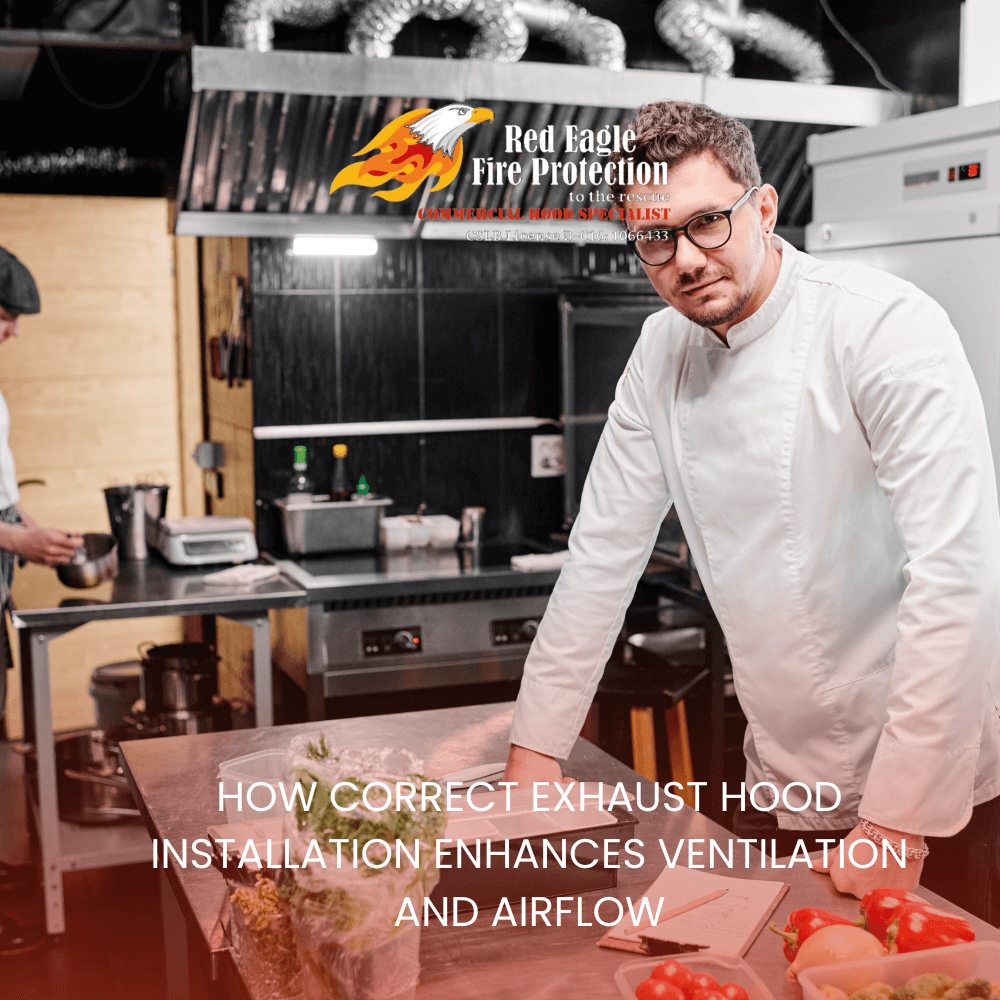Proper ventilation is critical for maintaining a safe and comfortable environment in a commercial kitchen. One of the most important factors in ensuring efficient ventilation is correct kitchen exhaust hood installation. When done properly, the installation of an exhaust hood significantly enhances airflow, improving both air quality and energy efficiency. Let’s explore how professional installation can optimize your kitchen’s ventilation system.
The Importance of Kitchen Exhaust Hood Installation
A kitchen exhaust hood is responsible for removing smoke, heat, grease, and airborne contaminants generated during cooking. Poor installation can result in inadequate ventilation, leading to unhealthy air, higher energy bills, and increased fire risks. Correct kitchen exhaust hood installation ensures that the hood functions optimally, capturing and removing contaminants efficiently to maintain a safe, comfortable kitchen environment.
How Correct Installation Improves Airflow
Proper kitchen exhaust hood installation is essential for maximizing airflow and ventilation in your kitchen. Here’s how correct installation enhances airflow:
- Optimal Hood Placement: The positioning of the exhaust hood is crucial for effective airflow. Placing the hood at the correct height above the cooking equipment ensures that smoke, grease, and heat are captured efficiently, preventing them from spreading throughout the kitchen.
- Correct Duct Sizing and Layout: The ductwork connected to the hood plays a key role in maintaining smooth airflow. Professional installation ensures that the ducts are properly sized and arranged to reduce resistance, allowing air to flow freely through the system.
- Efficient Exhaust Fan Installation: The exhaust fan is responsible for pulling air through the hood and out of the kitchen. Proper fan installation ensures that the system has enough power to maintain consistent airflow, even during high-volume cooking periods.
- Reduced Airflow Obstructions: Incorrect installation can result in blockages or obstructions in the ductwork, which restrict airflow and reduce the efficiency of the exhaust system. Professional installers make sure that the ductwork is free from obstructions and that airflow is maximized.
The Benefits of Enhanced Ventilation and Airflow
Correct kitchen exhaust hood installation brings a range of benefits by improving ventilation and airflow. These benefits include:
- Improved Air Quality: Properly installed exhaust hoods efficiently remove smoke, grease, and odors from the air, resulting in a cleaner, healthier environment for kitchen staff.
- Lower Energy Consumption: A well-installed exhaust hood operates more efficiently, reducing the amount of energy required to ventilate the kitchen. This leads to lower utility bills and a reduced environmental impact.
- Fire Safety: Effective ventilation reduces the buildup of grease in the exhaust system, minimizing the risk of grease fires. Correct installation helps maintain a fire-safe kitchen environment by efficiently removing flammable particles.
- Better Temperature Control: By removing excess heat from the cooking area, an efficiently installed exhaust hood helps maintain a comfortable temperature in the kitchen, improving working conditions for staff.
- Longer Equipment Lifespan: When installed correctly, the exhaust hood and ventilation system experience less wear and tear, extending their overall lifespan and reducing the need for frequent repairs or replacements.
Key Installation Factors for Maximum Ventilation Efficiency
Several key factors impact the success of a kitchen exhaust hood installation and its ability to improve ventilation efficiency. These factors include:
- Hood Size: The size of the exhaust hood must match the dimensions of the cooking equipment to ensure that all smoke and heat are properly captured. A professional installer will recommend the right hood size based on your kitchen’s needs.
- Ductwork Design: The ducts connected to the exhaust hood should be designed to minimize resistance and avoid sharp turns that could impede airflow. Proper duct design is critical to maintaining smooth, efficient ventilation.
- Ventilation Power: The exhaust fan should be powerful enough to handle the volume of air produced in your kitchen. A professional installer will select the appropriate fan size and power rating to ensure efficient airflow throughout the ventilation system.
- Filter Installation: Properly installed filters help capture grease and particles before they enter the duct system. This not only improves airflow but also reduces the risk of grease buildup and fire hazards.
The Risks of Poor Installation
Improper kitchen exhaust hood installation can lead to several ventilation problems, including:
- Poor Airflow: Incorrect positioning, undersized ducts, or improperly installed exhaust fans can reduce airflow, making the system inefficient at removing contaminants from the kitchen.
- Increased Energy Costs: An inefficient system requires more energy to maintain airflow, leading to higher energy bills.
- Fire Hazards: Poorly installed exhaust hoods may not remove grease-laden vapors effectively, increasing the risk of grease buildup and potential fires.
- Frequent Repairs: Improper installation can result in frequent malfunctions or breakdowns, leading to costly repairs and downtime in the kitchen.
Why Professional Installation Is Key
Hiring a professional for your kitchen exhaust hood installation ensures that the system is properly installed and optimized for maximum airflow and ventilation efficiency. Professional installers have the expertise to assess your kitchen’s needs, recommend the right equipment, and ensure that all components are correctly positioned and connected.
By investing in professional installation, you can avoid the risks associated with poor installation and ensure that your kitchen operates safely and efficiently.
Correct kitchen exhaust hood installation is essential for enhancing ventilation and airflow in commercial kitchens. Professional installation ensures that the hood is properly positioned, connected to well-designed ductwork, and supported by the right exhaust fan for your kitchen’s needs. By investing in expert installation, you can improve air quality, reduce energy consumption, and create a safer, more efficient kitchen environment.
READ MORE:
The Role of Proper Hood Installation in Boosting Kitchen Ventilation Power

